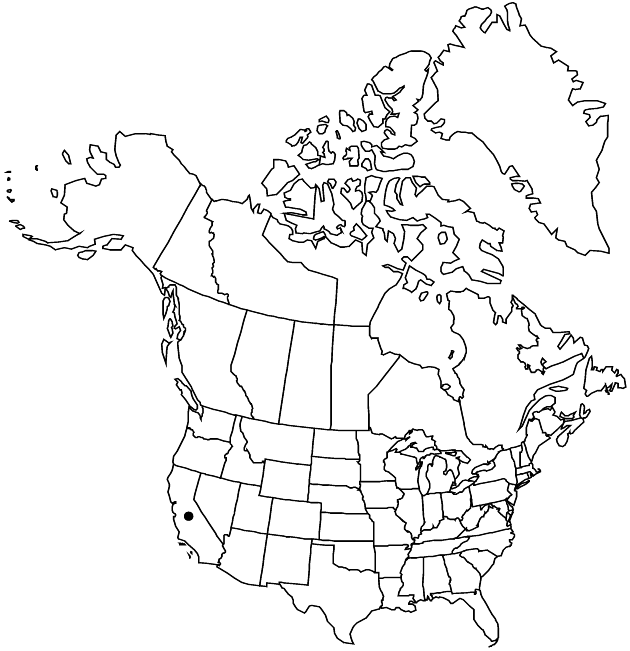Difference between revisions of "Arctotis stoechadifolia"
Descr. Pl. Cap., 324. 1767.
FNA>Volume Importer |
imported>Volume Importer |
||
| (3 intermediate revisions by 2 users not shown) | |||
| Line 8: | Line 8: | ||
}} | }} | ||
|common_names=Blue-eyed African-daisy | |common_names=Blue-eyed African-daisy | ||
| + | |special_status={{Treatment/ID/Special_status | ||
| + | |code=I | ||
| + | |label=Introduced | ||
| + | }}{{Treatment/ID/Special_status | ||
| + | |code=F | ||
| + | |label=Illustrated | ||
| + | }} | ||
|basionyms= | |basionyms= | ||
|synonyms={{Treatment/ID/Synonym | |synonyms={{Treatment/ID/Synonym | ||
|name=Arctotis grandis | |name=Arctotis grandis | ||
|authority=Thunberg | |authority=Thunberg | ||
| + | |rank=species | ||
}} {{Treatment/ID/Synonym | }} {{Treatment/ID/Synonym | ||
|name=Arctotis stoechadifolia var. grandis | |name=Arctotis stoechadifolia var. grandis | ||
|authority=(Thunberg) Lessing | |authority=(Thunberg) Lessing | ||
| + | |rank=variety | ||
}} {{Treatment/ID/Synonym | }} {{Treatment/ID/Synonym | ||
|name=Arctotis venusta | |name=Arctotis venusta | ||
| − | |authority= | + | |authority= |
| + | |rank=species | ||
}} | }} | ||
|hierarchy=Asteraceae;Asteraceae tribe Arctotideae;Arctotis;Arctotis stoechadifolia | |hierarchy=Asteraceae;Asteraceae tribe Arctotideae;Arctotis;Arctotis stoechadifolia | ||
| Line 33: | Line 43: | ||
|elevation=0–300 m | |elevation=0–300 m | ||
|distribution=Calif.;Africa. | |distribution=Calif.;Africa. | ||
| + | |introduced=true | ||
|discussion=<p>N. T. Norlindh (1964, 1965) treated <i>Arctotis</i> venusta as separate from <i>A. stoechadifolia</i>. In the sense of Norlindh, the latter is a rare endemic of sand dunes of the Southwestern Cape of Africa and A. venusta is common, more widespread, sometimes weedy in its native range, and cultivated elsewhere as an ornamental. Specimens from California examined for this treatment most closely resemble A. venusta in having tap roots with erect stems not rooting at nodes and phyllaries with blunt, woolly appendages less than 3 mm.</p> | |discussion=<p>N. T. Norlindh (1964, 1965) treated <i>Arctotis</i> venusta as separate from <i>A. stoechadifolia</i>. In the sense of Norlindh, the latter is a rare endemic of sand dunes of the Southwestern Cape of Africa and A. venusta is common, more widespread, sometimes weedy in its native range, and cultivated elsewhere as an ornamental. Specimens from California examined for this treatment most closely resemble A. venusta in having tap roots with erect stems not rooting at nodes and phyllaries with blunt, woolly appendages less than 3 mm.</p> | ||
|tables= | |tables= | ||
| Line 42: | Line 53: | ||
-->{{#Taxon: | -->{{#Taxon: | ||
name=Arctotis stoechadifolia | name=Arctotis stoechadifolia | ||
| − | |||
|authority=P. J. Bergius | |authority=P. J. Bergius | ||
|rank=species | |rank=species | ||
| Line 57: | Line 67: | ||
|publication title=Descr. Pl. Cap., | |publication title=Descr. Pl. Cap., | ||
|publication year=1767 | |publication year=1767 | ||
| − | |special status= | + | |special status=Introduced;Illustrated |
| − | |source xml=https:// | + | |source xml=https://bitbucket.org/aafc-mbb/fna-data-curation/src/2e0870ddd59836b60bcf96646a41e87ea5a5943a/coarse_grained_fna_xml/V19-20-21/V19_235.xml |
|tribe=Asteraceae tribe Arctotideae | |tribe=Asteraceae tribe Arctotideae | ||
|genus=Arctotis | |genus=Arctotis | ||
Latest revision as of 20:50, 5 November 2020
Annuals or short-lived perennials, (20–)40–70(–100) cm, arachnose, pannose, or woolly. Leaves: basal and cauline, obovate, 5–20 cm × 10–45 mm, margins usually entire to undulate, sometimes dentate, lyrate, or pinnately lobed (basal and proximal cauline usually withering before flowering, their bases petioliform); distal cauline smaller (sessile, bases clasping). Peduncles (6–)10–20(–30) cm, sometimes with 1 or 2 leaves (1–3 cm). Phyllaries: outer appressed, linear to linear-lanceolate, abaxial faces arachnose (appendages 1–3 mm, blunt, woolly); inner appressed, ± lanceolate (appendages 4–6 mm, rounded to acute, ciliate). Ray florets 22–30 in 1 series; corolla laminae (17–)20–30 × 2–4 mm, abaxial faces violet, adaxial white (sometimes yellowish proximally). Cypselae obovoid, 2–3 mm, sericeous (hairs from bases) and tomentulose (on faces); pappi of 5–8, ovate to oblong, hyaline scales 0.5–4 mm (outer shorter). 2n = 18.
Phenology: Flowering (Jan–)Apr–Nov.
Habitat: Roadsides, waste places, especially in sandy soils near coasts
Elevation: 0–300 m
Distribution

Introduced; Calif., Africa.
Discussion
N. T. Norlindh (1964, 1965) treated Arctotis venusta as separate from A. stoechadifolia. In the sense of Norlindh, the latter is a rare endemic of sand dunes of the Southwestern Cape of Africa and A. venusta is common, more widespread, sometimes weedy in its native range, and cultivated elsewhere as an ornamental. Specimens from California examined for this treatment most closely resemble A. venusta in having tap roots with erect stems not rooting at nodes and phyllaries with blunt, woolly appendages less than 3 mm.
Selected References
None.
